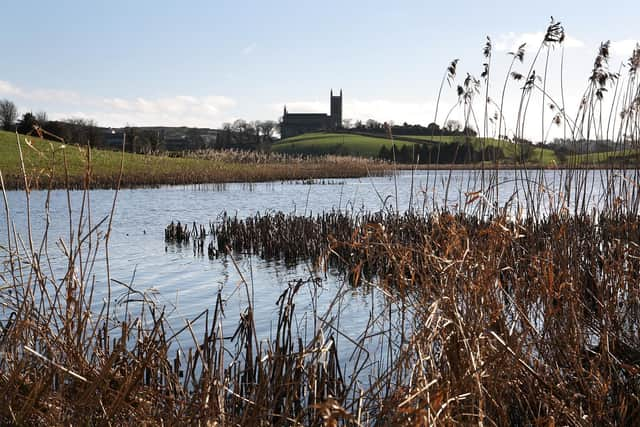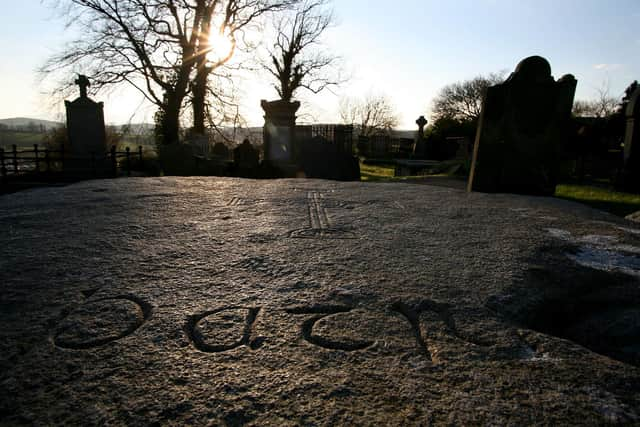Effect of age and weather impacting on Down Cathedral at Downpatrick (1953)
and live on Freeview channel 276
But sadly the cathedral, noted the News Letter, was in “grave danger” and that “once again the cathedral will suffer destruction, this time from the forces of nature”.
On a visit to the cathedral a News Letter reporter was shown the extent of the damage by the architect, Mr A F Lucy, FRIBA, who had been engaged by the Cathedral Restoration Committee in connection with the work of restoration.
Advertisement
Hide AdAdvertisement
Hide AdThe News Letter continued: “With him he climbed the tower and inspected the roof. From, this position the full damage to the external fabric of the cathedral can be clearly seen. Two pinnacles on the north side have stones off the top; other pinnacles are off the plumb, and the top five stones need to be taken off and reset Much of the castellated coping is in a defective condition also.


“In the tower many of the stones need to be replaced, while the mullions and jambs of the windows have crumbled under the expansion brought about by the rusting of the iron window frames. These are particularly in need of attention as there is some danger of the windows falling in on the congregation.”
It added: “In the tower windows overlooking the main door, an attempt to save the situation was made in 1914 by a local builder, who erected a wooden beam to hold the mullion secure. This temporary reconstruction has held since then, and was praised by Mr Lucy as a piece of very competent 'first-aid'.
“The havoc wrought by woodworm in the trusses, purlins and joists of the roof can be seen. The rafters, while not in such a bad condition, are also in need of replacement or repair with steel plates, if only to halt the spread of the worm. In the church furniture there is little sign of wood-worm, but some of the floor-boards in the north and south choir aisles have been weakened by this pernicious insect.”
Advertisement
Hide AdAdvertisement
Hide AdIn brief, the whole cathedral was in a bad state of repair and needs immediate attention. The fund established over a year previously, with a target of £20,000, had raised £9,900. The honorary secretaries and treasurers were Messrs. Samuel and Hugh Love, Market Street, Downpatrick.


The News Letter concluded: “Of the original settlement at Downpatrick little is known. However, there is some hope that in the near future sufficient material will have come to light to enable a reconstruction to be made of part of the history of this period. Excavations are now being carried out to the west of the cathedral, and traces have been found of at least two large settlements. No important finds are expected, however, for some weeks.”